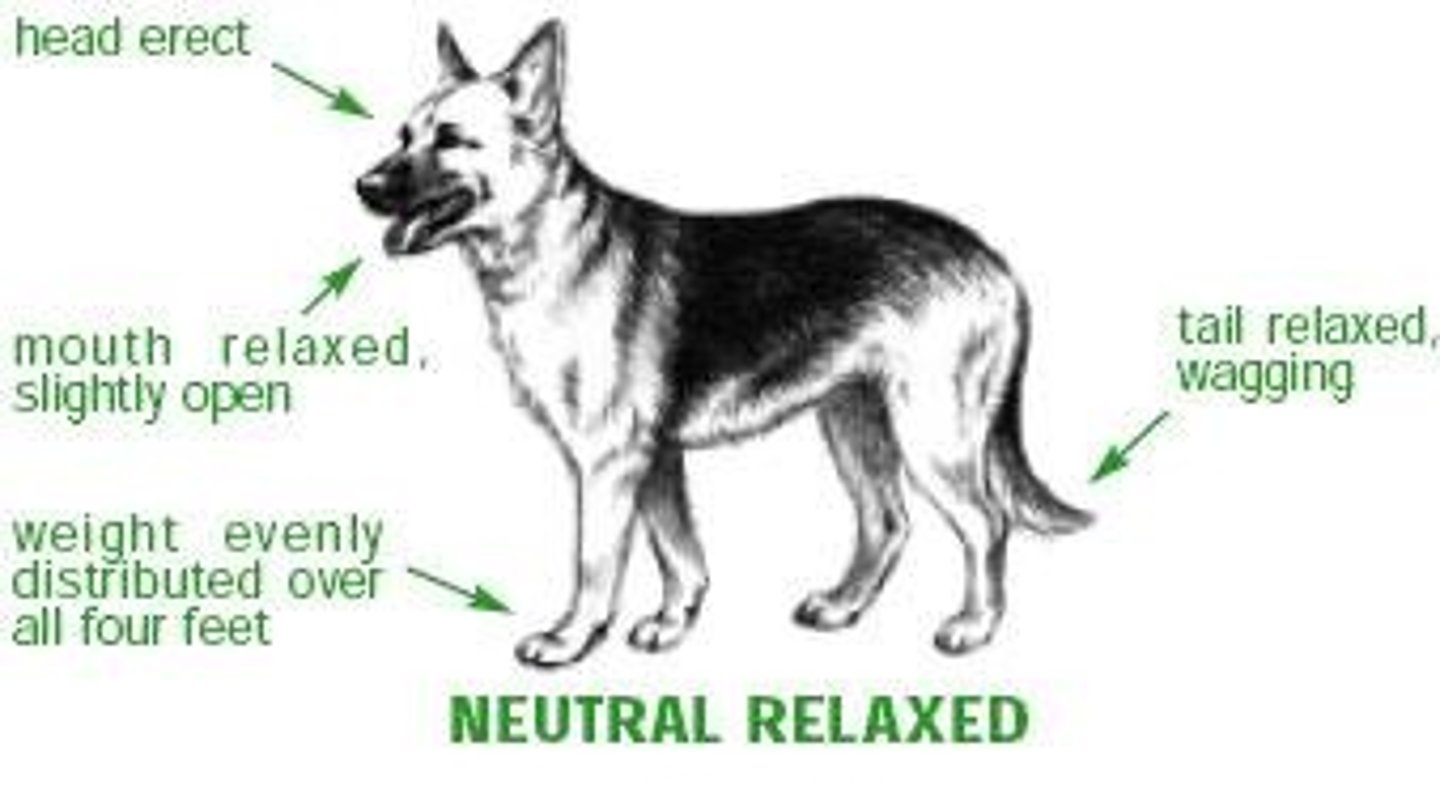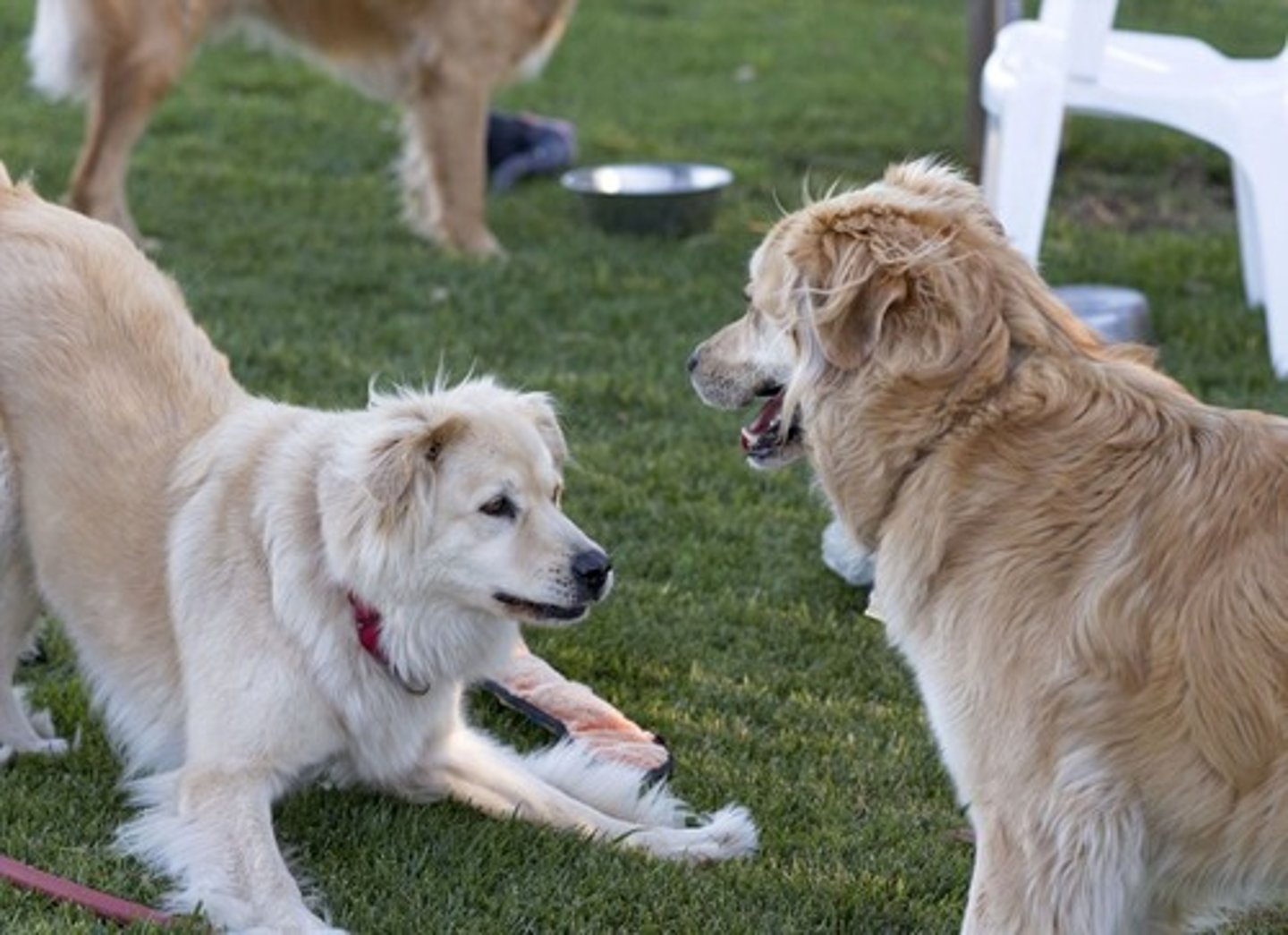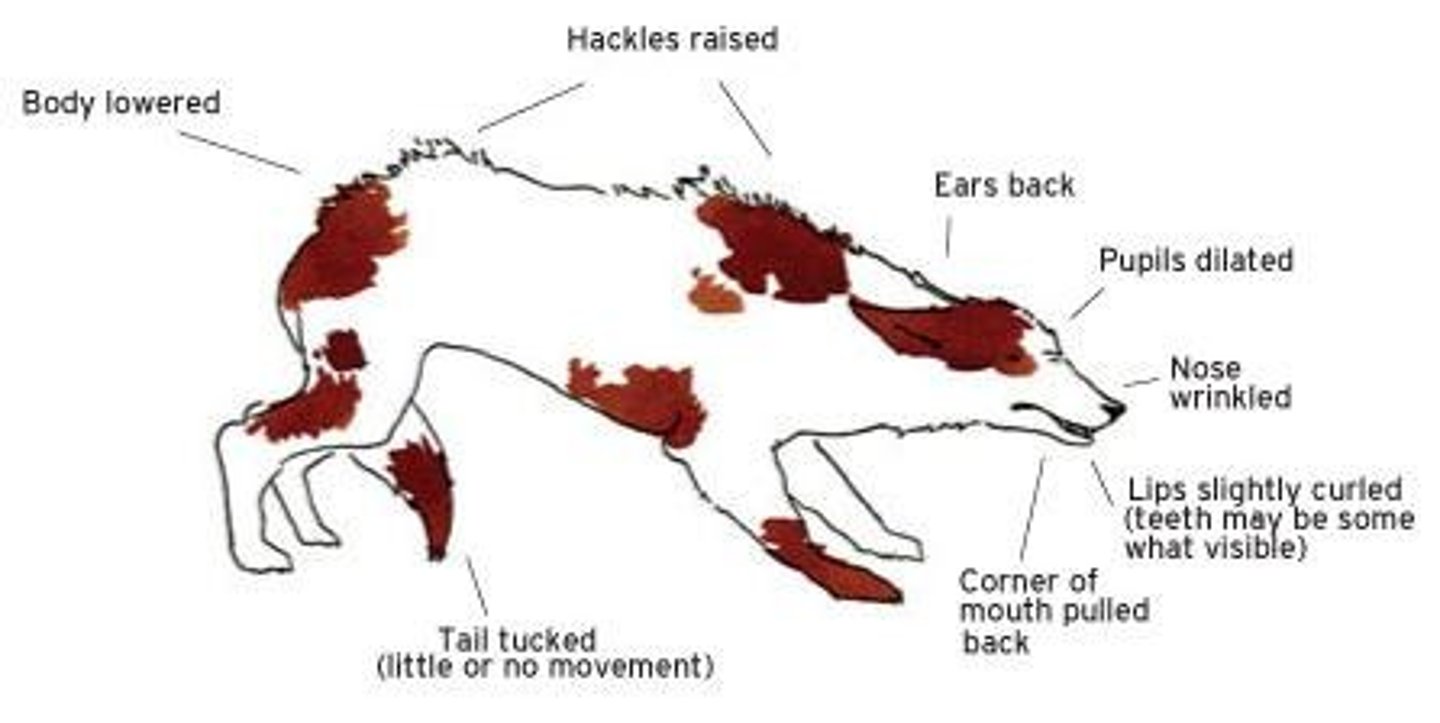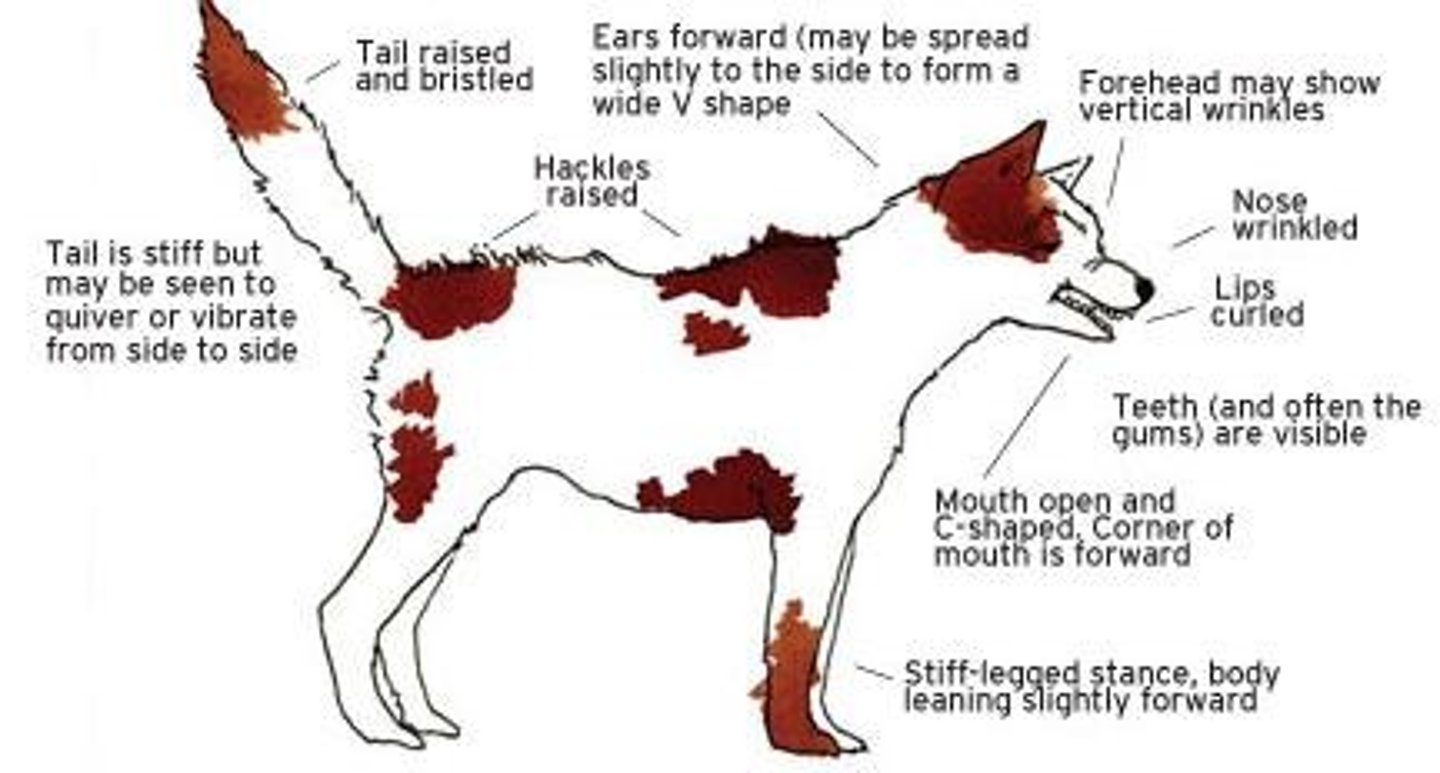Canine and Feline Body Language: Signs of Relaxation, Threat, and Aggression
1/22
There's no tags or description
Looks like no tags are added yet.
Name | Mastery | Learn | Test | Matching | Spaced |
|---|
No study sessions yet.
23 Terms
What are the signs of a relaxed dog?
Posture is relaxed with weight evenly distributed, may see a play bow or body wiggle; tail is in a relaxed and neutral position, possibly wagging; ears are relaxed; mouth appears soft, possibly open with tongue hanging out; eyes are soft with a relaxed gaze.

What does a play bow indicate in dogs?
It is a friendly gesture that may indicate playfulness, but can also be a displacement behavior.

What are the signs of a defensively threatening dog?
Body posture is tense with weight shifted back, tail is stiff or low, ears are pulled back, mouth may be hard with growling or snarling, and eyes show vigilance with dilated pupils.

What should you do if you encounter a defensively threatening dog?
Stop and create a behavior management plan, as the dog is likely to become offensively threatening if provoked.
What are the signs of an offensively threatening dog?
This dog is ready to aggress and will not avoid aggression if a perceived threat continues. The underlying motivation for this behavior is fear.

How do humans typically greet each other, and why can this be threatening to dogs?
Humans greet with direct approaches, eye contact, and quick movements, which dogs may perceive as threatening.
What is the recommended non-threatening approach to a dog?
Turn your body to the side, bend at the knees, pat the side of your leg, avoid direct stares, approach from the side, and speak in a soft tone.
What are the signs of a relaxed cat?
Head resting on a surface or body, eyes closed or heavy with pupils slit, tail extended or loosely wrapped, and no sounds or a soft purr.
What does an alert cat look like?
Head is over the body with some movement, ears are neutral or erected, tail is relaxed, and eyes are wide open with normal to partially dilated pupils.
What are the signs of a tense cat?
Head is pressed to the body, tail is close to the body and tense, eyes are wide open with dilated pupils, and may make yowling sounds.
What are the signs of an anxious cat?
Head is on plane with the body, ears are partially flattened, tail is close to the body, and may produce plaintive meows or growls.
What does a fearful cat exhibit?
Head is tucked, eyes are wide with fully dilated pupils, ears are fully flattened, and tail is curled under the body; may show aggression.
What are the signs of a terrified cat?
Head is lowered, eyes have fully dilated pupils, ears are pinned back, tail is close to the body, and may hiss or spit.
What are the imminent signs of a cat bite?
Sudden pupil dilation, piloerection, fast tail swishing, swatting with forearms, and vocalizations like yowling or spitting.
What should you observe when assessing a cat's behavior?
Stick with observable behaviors, look at the whole animal, integrate health status and developmental stage, and avoid picking the tail when in doubt.
What is the significance of piloerection in both dogs and cats?
Piloerection indicates arousal or fear, often seen in defensive or aggressive situations.
How should one approach a dog to avoid miscommunication?
Approach laterally, avoid direct eye contact, and use a soft tone to prevent the dog from feeling threatened.
What is the difference between canine and feline body language in greetings?
Dogs greet with lateral approaches and play bows, while humans use direct approaches and eye contact.
What is a common misconception about aggressive dogs?
While they may appear aggressive, the underlying motivation is often fear.
What is the role of body posture in canine communication?
Body posture conveys the dog's emotional state, indicating whether they are relaxed, anxious, or aggressive.
What does a 'whale eye' indicate in dogs?
It indicates discomfort or anxiety, where the dog shows the whites of their eyes.

What behavioral signs indicate a cat is ready to aggress?
Signs include a direct stare, ears pinned back, and a tense body posture.
What is the importance of understanding body language in veterinary settings?
Understanding body language helps prevent aggression and ensures safe interactions with animals.